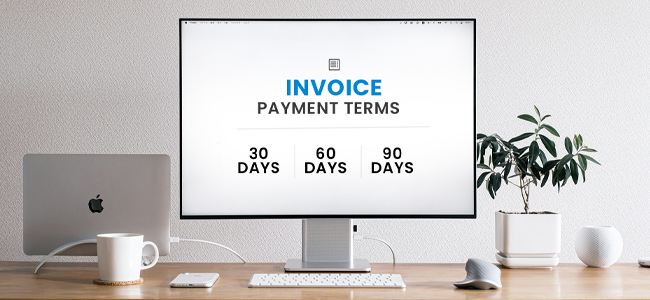“Beware of little expenses; a small leak will sink a great ship.” (Benjamin Franklin)
Extending 30-, 60- or 90-day payment terms may seem like a simple trick to help your sales teams convert sales, smooth negotiations and boost customer service. What you may not recognise, though, is that those terms are not neutral commercial niceties – they are a form of credit.
When your business supplies goods or services today and accepts payment weeks or months later, it has effectively provided an unsecured loan to the buyer. That “invisible loan” has measurable costs: higher working-capital needs, lost interest income, distorted pricing decisions and elevated credit risk.
When you sell on extended terms, “accounts receivable” grows and cash on the balance sheet shrinks until the buyer pays. That increases days-sales-outstanding (DSO) and raises the working-capital requirement. If you borrow to cover the gap (common for seasonal businesses or those with tight margins) the interest paid on that borrowing is a direct cost of the terms you offered.
Even when you don’t borrow, the opportunity cost remains: cash not received cannot be used to reduce debt, invest in higher-return projects, or fund inventory when demand spikes. Over time the cumulative burden of routinely extended terms reduces agility and margins.
Unfortunately, many clients demand extended payment terms, and your competition may be prepared to accede to their wishes. So how do you ensure you keep the business without going out of business yourself?
1. Price the finance
Treat longer payment terms as a priced service. Build a transparent financing fee into orders that use 60- or 90-day terms, or publish two price lists: a net price for immediate payment and a financed price for deferred settlement. Customers accept explicit fees more readily than hidden margin increases, and your finance team can model return on capital precisely.
2. Offer structured early-payment incentives
Instead of unconditional long payment terms, offer predictable early-payment discounts or dynamic discounting tied to actual payment date. A 0.5–1.0% discount for payment within 7–10 days often costs less than the buyer’s short-term borrowing and converts receivables into near-cash for you.
3. Underwrite and limit credit formally
Move from ad-hoc allowances to formal credit applications and limits. Require a minimum credit assessment for extended terms, set credit lines tied to payment performance, and review limits at set intervals. For new or higher-risk customers, insist on shorter terms or staged delivery until a track record is established.
4. Design payment terms as part of commercial deals
Make terms a negotiation item linked to value. Trade extended terms for commitments: volume guarantees, longer contract terms, staged milestones, or partial upfront payment. Where applicable, split deals into an upfront deposit and a deferred balance tied to delivery or performance to reduce unsecured exposure.
5. Use technology and supply-chain finance options
Make payment easier with accurate, timely electronic invoicing, one-click payment links, and multiple payment methods. For larger B2B (business-to-business) accounts, consider invoice finance or supply-chain finance platforms. They enable buyers to settle invoices early and suppliers to access cash immediately, typically with transparent and lower financing costs than traditional receivables.
6. Make the invisible visible
It’s essential to stop treating DSO as a passive metric and make extended terms a line item in cash-flow forecasting. Your accountant (that’s us!) can help you report the cost of terms monthly: financing cost, incremental bad-debt risk, and the foregone investment return on delayed cash. We can also supply a short finance note quantifying the cost and proposed mitigation (discount, guarantee, deposit).
The bottom line
Payment terms are a commercial tool and a financial instrument. When finance and sales treat them differently, an invisible loan quietly accumulates. By following the steps outlined in this article you can make the loan visible and manageable. That shift preserves customer flexibility while protecting cash, margins and your company’s capacity to invest.
If you need help structuring your payment terms, speak to us.
Disclaimer: The information provided herein should not be used or relied on as professional advice. No liability can be accepted for any errors or omissions nor for any loss or damage arising from reliance upon any information herein. Always contact us for specific and detailed advice.
© AccountingDotNews





